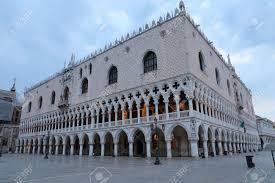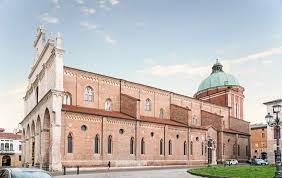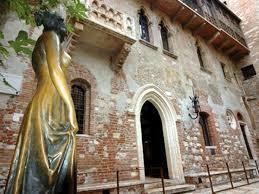10 monument in Venezia
Piazza di San Marco
Piazza di San Marco and the only square that bears the name of the square, with its details and its magnificent structure is the most beautiful square in the world. The structure is completely enclosed and extends trapezoidal in front of the Basilica of San Marco.

Basilica di San Marco
The construction of the Basilica began in 828 to house the relics of San Marco. It was renovated and modified in the following centuries. The current Basilica is built in the shape of a Latin cross and has five domes. It has over 4,000 square meters of mosaics, from the 13th century and 500 columns from the 3rd century. The interior of the Basilica is predominantly gold in color, hence the nickname "Church of gold". The Ascension dome is covered with mosaics from the early 13th century, depicting scenes from the New Testament.
Inside we find a Museum of San Marco, a museum gives you the opportunity to closely observe the ceilings and mosaics of the Basilica and, above all, to see the magnificent original sculptures of the Horses of San Marco. The museum also contains other works of art.
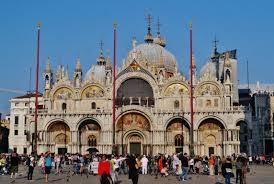
The Palazzo Ducale
The Palazzo Ducale in Venice is structured in a grandiose stratification of constructive and ornamental elements. This reliquary of Arab and Byzantine style. The Palazzo Ducale represented for centuries the seat of Venetian political power. In its splendid halls, plastered and hundreds of masterpieces of painting, the Duke and his Council controls the fate of a thousand-year-old republic.
the rooms of power, is to immerse oneself in a particular historical context in the European Middle Ages and immediately following centuries.

Rialto bridge
The Rialto bridge we know is quite recent: it was in fact built in 1588 to replace a wooden one with the central mobile part to allow the passage of tree-lined boats. To tell the truth the first bridge was made on boats, replaced by a fixed one; this was destroyed and rebuilt.The most famous bridge in Venice, remained the only one to cross the Grand Canal. It is divided into three ramps by two rows of shops joined to the center by as many arches. The foundations rest on larch boards and elm poles. He replaced the previous wooden drawbridge.

Academy Bridge
The bridge was built during the nineteenth century at the time of the maximum expansion of the use of iron elements. It is special because of the 50 steps up and 50 steps down. The Academy bridge is the last pedestrian bridge of the four bridges that cross the Grand Canal towards the st. Mark Square. It is not the most famous bridge in Venice, but the Accademia Bridge has a beautiful architecture and I think it is a good location to take pictures.

Campo San Bartolomeo
San Bòrtolo, an ancient commercial heart of the city and today a lively meeting place, is located a few steps from the Rialto bridge. At the center dominates the monument to the Venetian playwright Carlo Goldoni (1883) while among the buildings overlooking the field there is Palazzo Moro, a fine example of a patrician dwelling from the 14th century with a terracotta facade and hexaphore (six windows) ogival to the noble floor .

The Clock Tower
The Clock Tower in Piazza San Marco is of enormous importance, both practical, historical and symbolic in the history of Venice. Now, however, this extraordinarily elaborate watch is again on display to the public, fully functional, and delight both visitors and Venetians, as it has done for more than 500 years.
The clock shows the time of day, the dominant sign of the moon, is an extraordinarily elaborate clock. Piazza San Marco is the heart of Venice, the political and religious power the commercial center and for centuries the meeting place in the city. The clock was solved in a practical role in what was a powerful maritime empire in the past centuries.
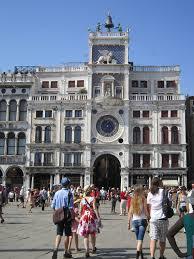
Villa Margherita
The beautiful Villa Margherita, on the Gabriele D'Annunzio waterfront, was built between 1919 and 1920 by the Bolognese architect Mario Vucetich for the noble Guido Alverà. Its imposing structure is surrounded by a large garden, and is characterized by its eighteenth-century style, with strong references to the Baroque.
The window frames and the string courses have shell decorations, inspired by the setting of the Lido, while the wrought iron of the balconies and of the gate are particularly elaborate. Before 1926 the villa passed into the hands of Count Gaetano Marzotto, textile industrialist from Valdagno, who gave it the name of his wife Margherita. At his death, in 1927, it was sold by the heirs and transformed into a condominium from which several apartments were obtained.

Scala contarini del Bovolo
This is a hidden monument near the Campo Manin and is one of the most fascinating corners of Venice, with the extraordinary staircase of the Contarini palace overlooking it. Built, according to recent studies, by the architect Giorgio Spavento at the end of the fifteenth century, it unfolds in a cylindrical tower with a snail shape, bòvolo in Venetian, punctuated by round arches on columns, taken from the arcades to mark the various levels.
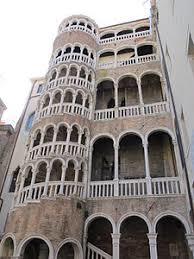
Palazzo Vendramin Calergi
It is an exceptional building in the panorama of Venetian architecture that anticipates the solutions of the full Renaissance. Commissioned by the Loredan family, it was built by Mauro Codussi starting in 1481. The main façade, towards the Grand Canal, is of fundamental importance, clad in marble and punctuated by columns framing the large windows. The body on the left was added in the seventeenth century by Scamozzi.

5 monument in samll contry in Veneto
Duomo di Vicenza
Founded in the early Christian age, in the 5th century, after the sacking, it was enlarged into a three-nave structure. At the beginning of the seventh century the bishop commissioned the reconstruction that through the various restiggiations and modifications.The current appearance must be largely due to the fifteenth century works with the construction of the Gothic facade, attributed to Domenico da Venezia, and the arrangement of the chapels and the thirteenth-century apse.
After some neo-gothic interventions in the mid-nineteenth century, the cathedral was bombed during the Second World War and the restorations were carried out until 2002.

La casa di giulitetta Verona
Juliet's house is the most famous place in Verona in the world. This is the "Stallo del Cappello", an old tower-house built between the end of the 1200s and the beginning of the 1300s. Popular tradition has always considered it the home of the Capulets or Cappelletti: Juliet's family.
At the end of the 19th century, the Capulet house was restored. In the courtyard, in addition to the famous balcony, one can see the bronze statue of Juliet. Over the years, furniture and paintings from various periods have been placed inside it. over the years, furniture and paintings from various periods have been placed inside it.

Piazza Sant' Antonio Padova
The vast Piazza del Sant 'Antonio, on which the church stands and which enjoys the right of extraterritoriality, is limited by the Oratory of S. Giorgio, the Scuola del Santo and the Museo Civico. In front of the Basilica del Santo, high on its pedestal, one of the most famous equestrian monuments in Italy and in the world: the statue of Gattamelata by Donatello. The square known by the Paduans as Saint.

Palazzo Trecento Treviso
The Palace was built around 1185 as a meeting room for the various bodies of the Municipality of Treviso. In 1944 the Palace was the victim of a bombing that caused serious damage to the structure and to the frescoes in the hall. The Palace, which today hosts important exhibitions and has an exposed brick surface, is made up of two floors: on the ground floor is the loggia perhaps realized by Andrea da Valle, on the upper floor is the living room, illuminated by a series of three-mullioned windows. Internally, the frescoes created between the 14th and 16th centuries by Venetian artists and mostly coats of arms and themes linked to civil power and justice are partially preserved. Worthy of note are the paintings depicting the Madonna with Child and the Saints.

Topinioni on Torre del Capanon
The first documents that attest the beginning of the construction of this tower that was part of the castle, indicate the X century as a date. Today the tower, although lacking the original bells, probably lost in the 16th century during a very violent storm, is 33 meters high. When the castle lost its defensive function, the tower remained the symbol of the city of Feltre.
From the courtyard you can also look out on the other side where you can see the majestic Belluno Dolomites, a UNESCO heritage site.

What to see in Umbria?
Monuments, restaurants and local foods
How to enjoy Clermont-Ferrand
Clermont-Ferrnad, located in Auvergne a green and peaceful region, is the perfect place if you want to discover France in an unusual way.
Morocco by car
Morocco by car. The full itinerary of a car trip in Morocco.
Road trip: 15 days accross Europe
Go through 4 different countries and visit new places, cultures and ways of life in a 12 days road trip accross Europe.



